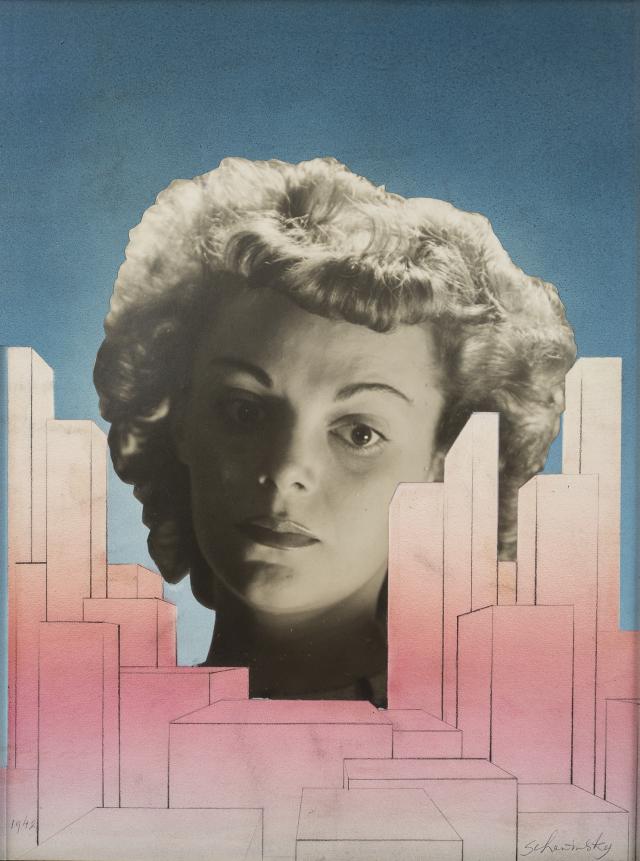Covering a broad range of genres and techniques, Xanti Schawinsky’s work is characteristic of the interdisciplinary approach of the Bauhaus. His prolific practice extended from painting to drawing, from experimental photography to stage design, from jazz to complex theatrical plays, and also included dance, exhibition design, and graphic and commercial design.
Having previously used essentially performative strategies, and although theatre remained the true core of his artistic world throughout his career, in the 1940s the artist concentrated more on two-dimensional works. After moving to New York in 1938, Schawinsky did graphic design commissions for various advertising campaigns. He designed the military camouflage pattern for the US Army Air Forces, and this inspired a series entitled Faces of War, which depicted strange creatures that were half-man and half-war-machine, particularly meaningful figures in the context of the Second World War.
Building on the plastic experiments of Black Mountain College, he started a new series entitled Head Drawings, consisting of portraits made in a metaphysical vein, some of which served as models for printed advertisements. The three works in the Collection Pictet were created in the same spirit, mixing drawing, photography and graphic design. In The Variations on a Face Series (Woman), Schawinsky presents enigmatic photographs of a woman’s face originating from a poster project, floating like a hologram in a variety of spaces – a landscape, a nocturnal sky or a geometric space.
In one composition – a cross between photomontage and collage – she appears to be projecting slightly, transparently merging with a stylized arabesque spray-painted through a stencil, in a subtle superimposition that creates an inevitable ambiguity between foreground and background.
Another work, on a black background, is based on a photograph optically contained within a crystalline prism floating in front of a network of geometric objects sketched with chalk. Schawinsky succeeds in skillfully thwarting the medium’s two-dimensionality by creating the illusion of spatial depth, a true keystone of his plastic research.
Having previously used essentially performative strategies, and although theatre remained the true core of his artistic world throughout his career, in the 1940s the artist concentrated more on two-dimensional works. After moving to New York in 1938, Schawinsky did graphic design commissions for various advertising campaigns. He designed the military camouflage pattern for the US Army Air Forces, and this inspired a series entitled Faces of War, which depicted strange creatures that were half-man and half-war-machine, particularly meaningful figures in the context of the Second World War.
Building on the plastic experiments of Black Mountain College, he started a new series entitled Head Drawings, consisting of portraits made in a metaphysical vein, some of which served as models for printed advertisements. The three works in the Collection Pictet were created in the same spirit, mixing drawing, photography and graphic design. In The Variations on a Face Series (Woman), Schawinsky presents enigmatic photographs of a woman’s face originating from a poster project, floating like a hologram in a variety of spaces – a landscape, a nocturnal sky or a geometric space.
In one composition – a cross between photomontage and collage – she appears to be projecting slightly, transparently merging with a stylized arabesque spray-painted through a stencil, in a subtle superimposition that creates an inevitable ambiguity between foreground and background.
Another work, on a black background, is based on a photograph optically contained within a crystalline prism floating in front of a network of geometric objects sketched with chalk. Schawinsky succeeds in skillfully thwarting the medium’s two-dimensionality by creating the illusion of spatial depth, a true keystone of his plastic research.
